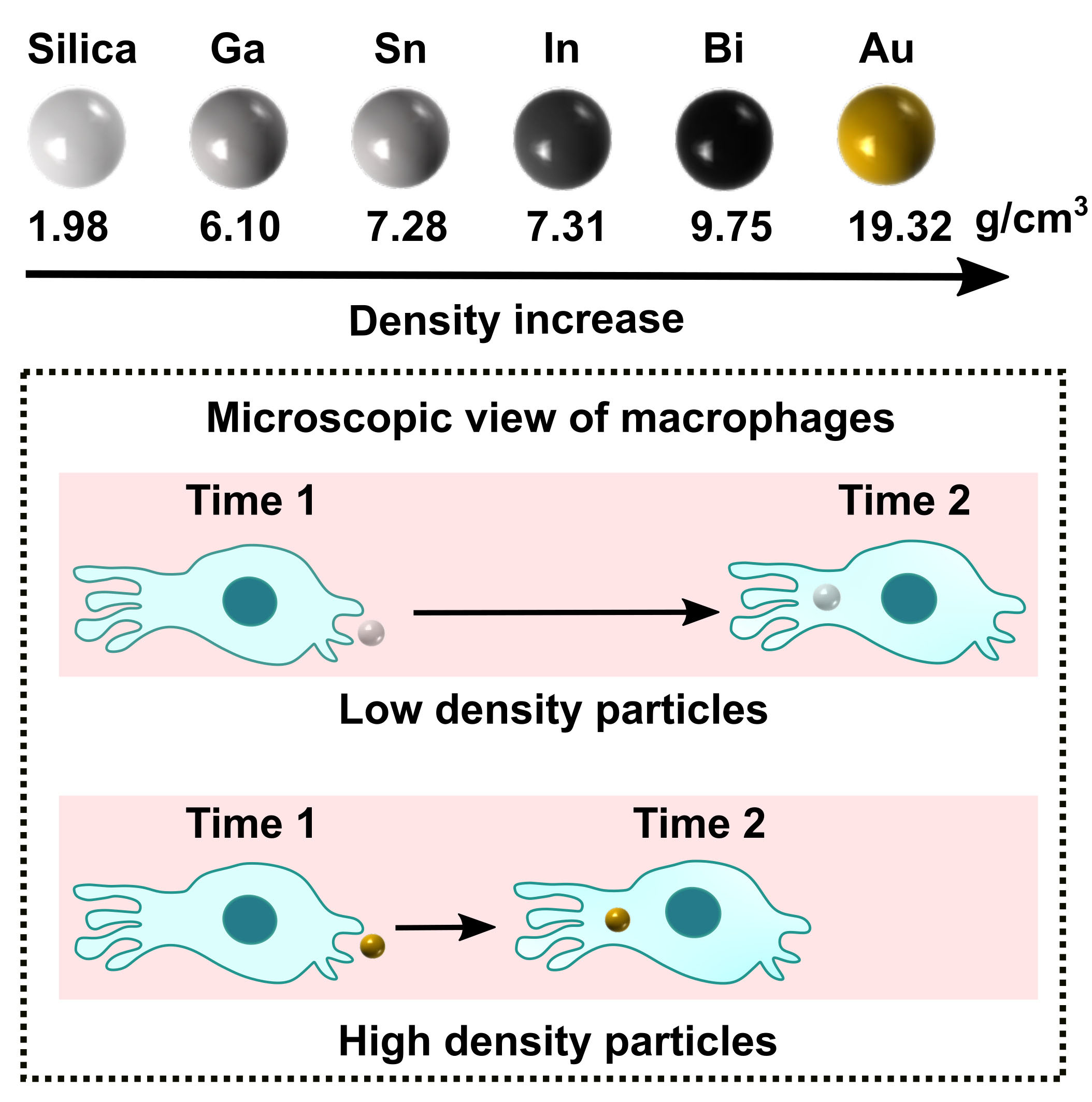| Nov 29, 2022 |
Dense nanoparticles slow down cells' movements
(Nanowerk News) Since the concept of nanotechnology was first introduced several decades ago, it has been widely incorporated into many products, including electronic devices, fabrics, cosmetics, food, and drugs. Given these successes across different fields, medical researchers have used nano and micro particles for disease diagnostics, prevention, and treatment. The most well-known examples today are the COVID-19 mRNA-based vaccines, which use nanoparticles made of lipids or fatty acids to deliver mRNA for triggering an immune response.
|
|
There are many factors that affect the functionality and efficiency of nanoparticles when using them for medical applications. Factors such as size, shape, and surface chemistries have been frequently studied in clinical contexts. However, puzzlingly to date, the influence of density, as one of the most important characteristics of nano and micro particles for their medical utilizations, has been largely ignored.
|
|
To cover this gap, researchers at Professor Kalantar-Zadeh’s Centre for Advanced Solid and Liquid based Electronics and Optics (CASLEO) at UNSW, Sydney, and their collaborators investigated the effect of density in the interaction of nanoparticles with cells which was reported on their recent paper published in Small ("Mechanistic Observation of Interactions between Macrophages and Inorganic Particles with Different Densities").
|
 |
| Graphical abstract of the mechanistic observation of interactions between macrophages and inorganic particles with different densities. (Image: CASLEO)
|
|
In this comprehensive and fascinating study, the researchers used macrophages, which are a specialized type of white blood cells involved in engulfing nano/micro particles for drug delivery, as the model cells to study the effect of particles densities. Macrophages act as defenders and scavengers in our bodies and can migrate from blood vessels to tissues to engulf foreign particles. Using inorganic nanoparticles with different densities, including silica (least dense), gallium, tin, indium, bismuth, and gold (most dense), the authors studied the influence of particles’ densities on macrophages’ migration properties.
|
|
Macrophages crush particle clusters into individual particles and then engulf them into the cells. By ruling out the effect caused by the particles’ concentrations, surface chemistries, morphologies and total amount, the authors found that the density of particles dominantly affects macrophages’ migration velocities and trajectories. The engulfment of particles of higher densities results in lower cell migration speeds and generally shorter migration tracks.
|
|
“I am perplexed why the density of nanoparticles in their interactions with cells had not been considered in scientific contacts. I hope that my work is a start of this important research and others continue to unveil the full gamut of the effect.” Dr Chengchen Zhang, the first author of this work, said.
|
|
This study adds a crucial reminder to the fields of medicine and food sciences that the particle density of nanomaterials cannot be neglected when they are utilized in biological applications.
|

